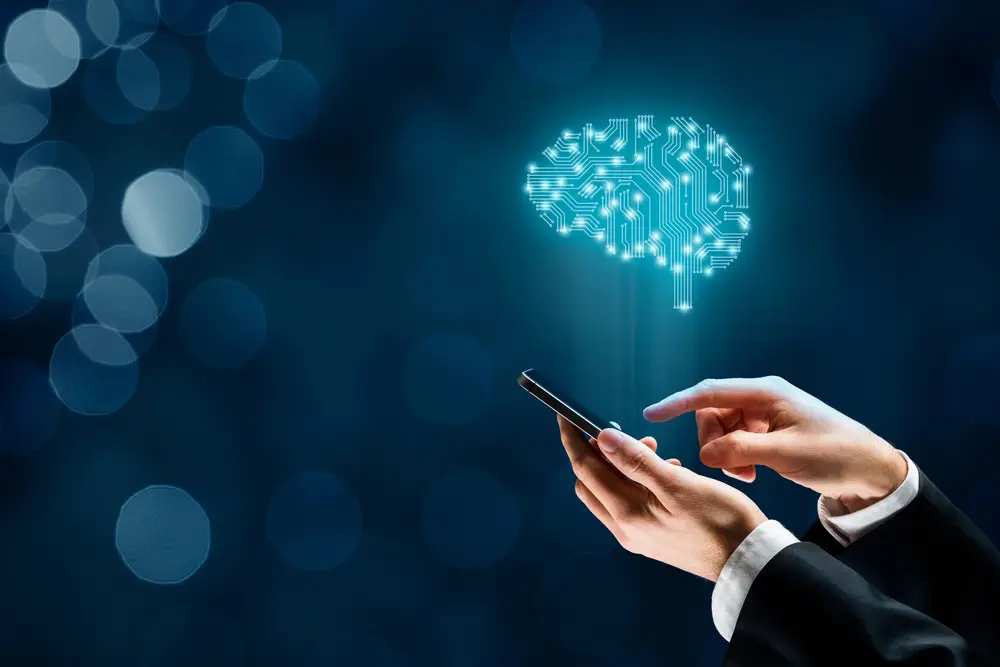A world where machines can learn and adapt, mimicking human intelligence? That’s the Simple Definition of Artificial Intelligence, a field that’s gone from science fiction to grocery store self-checkout lines in a surprisingly short time. But how exactly does AI work, and what’s the buzz around these new “Large Language Models” (LLMs)?
At its core, Artificial Intelligence is the simulation of human intelligence in machines. These machines are designed to think, learn, and make decisions, much like a human would. AI is applicable in various forms, from simple algorithms that recommend movies on streaming platforms to complex systems that drive autonomous cars. The journey of AI began in the mid-20th century, in 1956, when the term Artificial Intelligence was coined at the Dartmouth Conference, marking the birth of AI as a field of study. Early AI research focused on problem-solving and symbolic methods. However, progress was slow due to limited computational power and data.
Artificial Intelligence and Machine Learning
A significant breakthrough in Artificial Intelligence came with the advent of machine learning (ML). Unlike traditional programming, where rules are explicitly coded, ML allows machines to learn from data. This shift enabled AI systems to improve their performance over time without human intervention. Techniques like neural networks, inspired by the human brain, became the foundation of modern AI. Yet, one of the most exciting advancements in AI is the development of Large Language Models (LLMs). These models, such as OpenAI’s GPT-3 and GPT-4, are designed to understand and generate human-like text.
Think of AI like a super-powered calculator that can learn and improve over time. Unlike traditional programs with pre-set instructions, AI systems are trained on massive amounts of data. This data could be anything from text and images to sounds and videos. To make it more accessible, here’s an analogy: Imagine teaching a child to recognize animals. You show them pictures of dogs, cats, and birds, pointing out the features. The child learns to identify these animals based on those features. Similarly, AI learns by analyzing data, building its own understanding of the world.
The story of LLMs goes back to the early days of AI research, where scientists were fascinated by the idea of machines that could understand and generate human language. However, the computational power and data needed to train these models simply weren’t available until recently. Today LLMs use a technique called deep learning, which involves training neural networks. These networks analyze patterns in the data and learn to generate text that mimics human language. The training process involves feeding the model massive datasets, such as books, articles, and websites, to help it understand language nuances.
There’s Artificial Intelligence, and then there will be Super AI… (one day)
There are two main types of AI. On the one side we have narrow AI (or Weak AI): this is the kind we encounter most often. It’s designed for a specific task, like playing chess or recommending movies. Think of it as a specialist doctor highly skilled in one area, but not a general practitioner. On the other side, please welcome general AI (or Strong AI). This is the stuff of sci-fi movies machines with human-like intelligence capable of tackling any problem. We’re not there yet, but researchers are constantly making progress.
However, to understand the impact of AI, it can be useful to compare it to other groundbreaking inventions. Think of the invention of the Internet. Just as the Internet revolutionised communication and access to information, AI is transforming how we interact with technology. Similarly, the invention of electricity changed the world by powering homes and industries. AI, with its ability to automate tasks and make intelligent decisions, is poised to bring about a similar revolution.
So shall we consider AI a friend or foe?
AI is a powerful tool with incredible potential to improve our lives. From medical diagnosis to personalised education, the applications are endless. However, it’s important to be aware of the challenges as well. The future of AI is incredibly promising as technology continues to advance, and AI systems will become even more sophisticated and capable. Only future generations would possibly answer our original question.
We can expect AI to play a crucial role in healthcare, education, transportation, and many other sectors. However, it’s essential to think of ethical considerations and ensure that AI is follows them responsibly. Issues like bias in data and the potential for job displacement need to be addressed as soon as possible. AI may seem complex, but with a little understanding, it becomes much less intimidating. It’s not about machines taking over the world, but rather about using technology to make our lives better. Understanding AI and its potential can help us navigate the future and harness its benefits. The future of AI promises to be an exciting journey, and who knows, maybe we will all be part of it!

 Exploring the Latest Social Media Trends and How to Use Them
Exploring the Latest Social Media Trends and How to Use Them 10 Hidden iPhone Features You Didn’t Know Existed
10 Hidden iPhone Features You Didn’t Know Existed